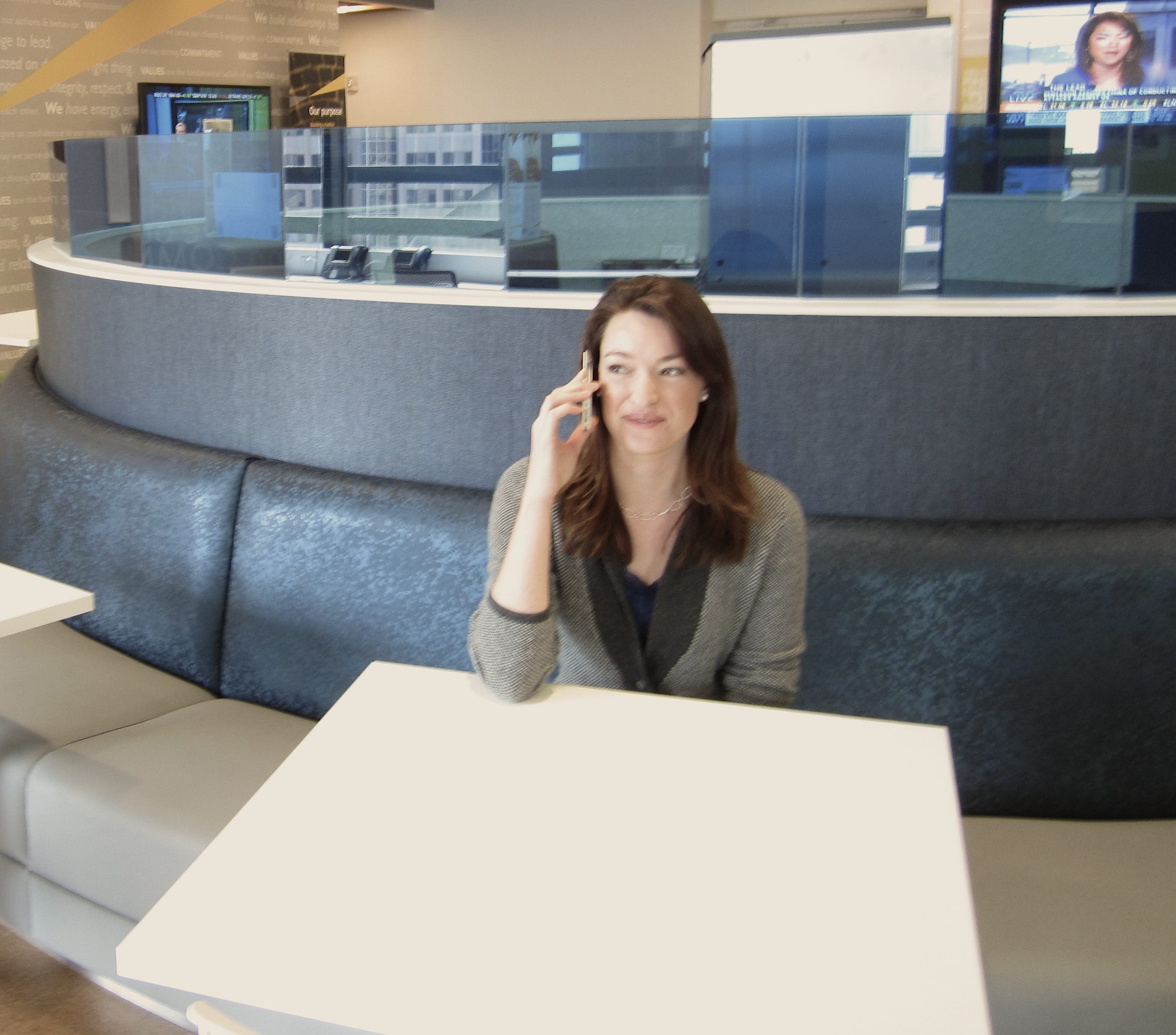Workplace Culture
Ernst & Young Creates Flexible Office Environment
By Ed Frauenheim
Jun. 10, 2013
Besides flexible schedules and flexible work-at-home arrangements, another kind of workplace flexibility is emerging. Call it the flexible office.
You can see its contours on the eighth floor of a San Francisco skyscraper. Walk into the offices of Ernst & Young there, and you enter a space that resembles a college campus center much more than a corporate cubicle farm.
In what Ernst & Young consciously calls its “Workplace of the Future,” employees first see a lounge with a wall of big screen TVs, comfortable benches and café-style tables. Move past that into the more formal work areas and you see desks without cube walls juxtaposed with couch and chair areas. There also are phone-boothlike micro-rooms, larger offices and “collaboration rooms” outfitted with tools such as teleconferencing equipment and technology for easily sharing computer displays on larger LCD screens.
As striking as the layout is how employees at the professional services firm use the space, which is designed to accommodate 215 employees. None of the desks or offices is permanently assigned to anyone. Employees reserve desks or rooms based on their needs—a tax specialist may join a group of peers in a conference room for the morning, make a sensitive call to a client in one of the private phone rooms in the early afternoon and later occupy a desk in a common area.
The idea is to marry the physical layout of the office with the way work gets done best—with plenty of collaboration by frequently mobile workers, says Brian May, a partner in the firm and leader of Ernst & Young’s financial services practice for the U.S. west region.
“It’s not one size fits all for anyone, and it’s not one size fits all for any day,” says May, who served as the executive sponsor of the new office design in San Francisco and whose team began working in it last October.
Ernst & Young is launching a number of “Workplace of the Future” pilot environments around the world. And it isn’t alone in rethinking office space layouts. Other organizations doing so include consulting firm Accenture, software giant Microsoft Corp. and office furniture provider Steelcase Inc. Reasons to shake up traditional offices—dominated by cubicles, executive offices and occasional conference rooms—include better tapping the power of face-to-face teamwork, reducing real estate costs and making it easier for telecommuting or traveling workers to “touch down” in offices.
Moving away from fixed desks comes with challenges. “Lounge” areas can get noisy. And workers can miss their own dedicated space. Ernst & Young officials, though, say that after an adjustment period most of the employees assigned to the novel San Francisco space appreciate the environment—which has more collaborative spaces and more options for “head-down” work, including setting up in the Wi-Fi-enabled lounge.
In some ways, the space is a rebuke on the era of the cubicle. The face-to-face collaboration prized today calls for open, shared spaces where two or more people can comfortably sit at a desk or table. And nowadays many employees, not just executives, need solitude behind closed doors—for concentrated work or to make discrete calls of a personal or professional nature. Nancy Altobello, Ernst & Young’s head of people for North America, South America and Israel, makes the point that cubicles typically provide neither real privacy nor real opportunities for people to gather around the same workspace. “A cubicle is not open, nor is it private,” she says. “That’s why we’re continually providing innovative new options for our people to both collaborate and concentrate in an evolving workplace, whether that’s through unique meeting space or leading technology.”
At the new San Francisco office, workers on a recent morning took advantage of the range of spaces available. They made confidential phone calls, worked at desks in common areas and gathered in various conference rooms.
The “Workplace of the Future” also helps attract Ernst & Young’s workforce of the future, May says. Job candidates shown the new digs are excited by what they see, he says. “They come in and say, ‘This doesn’t feel like an accounting firm,’ ” he says.
Ed Frauenheim is associate editorial director of Human Capital Media, the parent organization of Workforce. Comment below or email him at efrauenheim@workforce.com.
Schedule, engage, and pay your staff in one system with Workforce.com.
